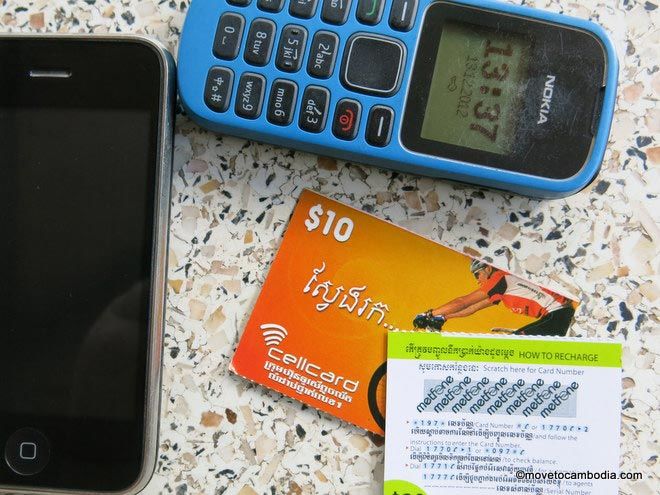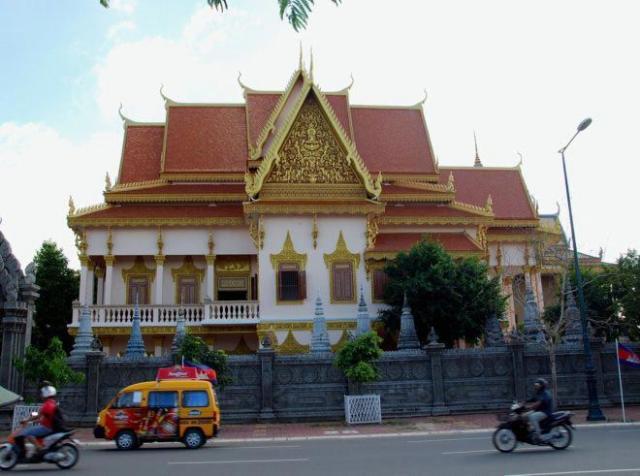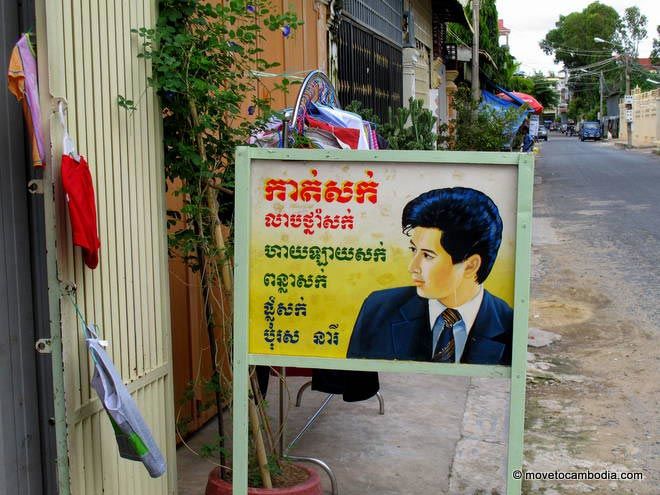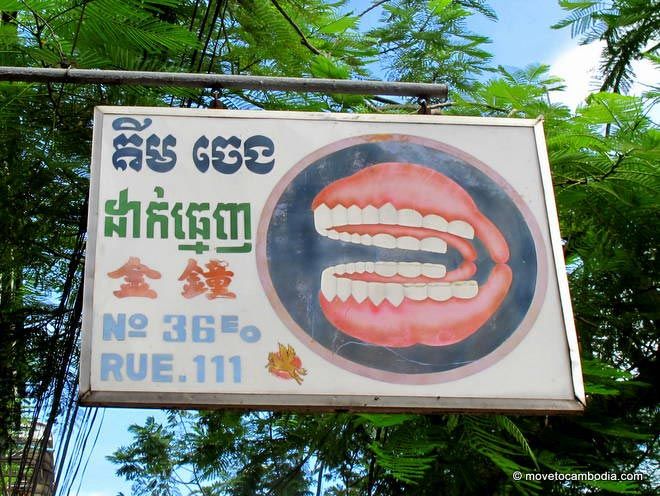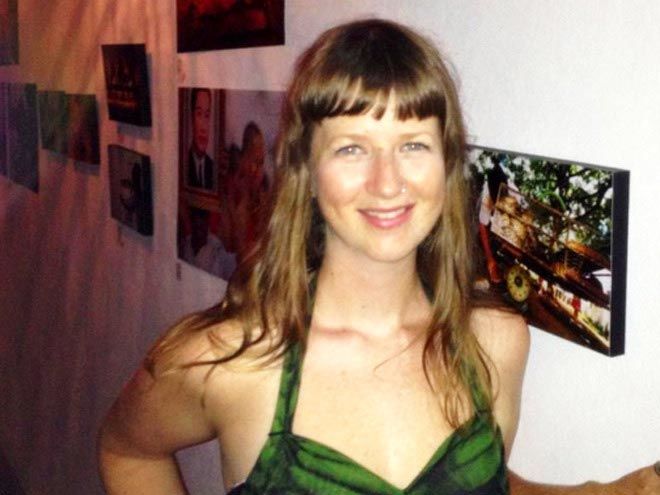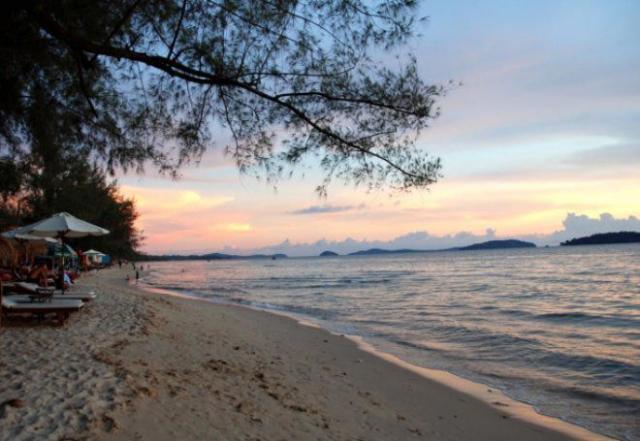Rosy Guesthouse is a family-run guesthouse next to the Siem Reap River offering a variety of lovely rooms and excellent food. After arriving from a long bus trip, I wanted nothing more than a hot shower and a comfy bed. I was rewarded with exactly that — and more.
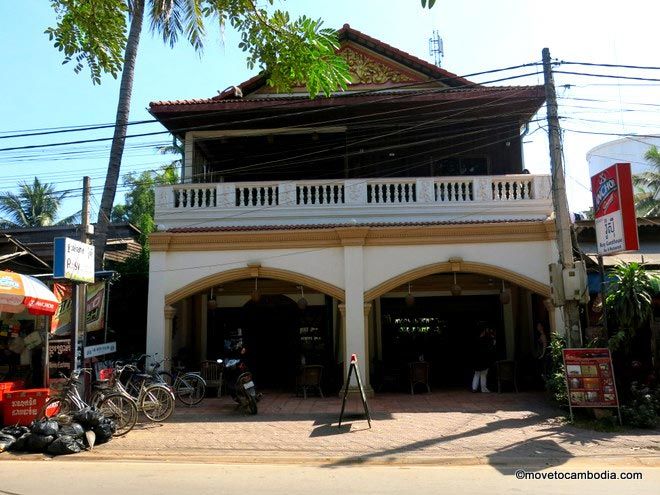
Your new home in Siem Reap, Cambodia.
The last time I was in Siem Reap I ate a lot of my meals at Rosy Guesthouse, and appreciated the homey atmosphere and friendly staff and owners. At the time, I had thought it was more of a backpacker joint, so when I was shown to my deluxe room on this visit, I was pleasantly surprised. Featuring free WiFi, cable TV, a DVD player (you can borrow movies from reception), hot water, air-conditioning and nice touches like Khmer shadow puppet photography on the walls, the place was more flashpacker than backpacker. This was on the high end of the $8-$30 room spectrum, so they probably have some not-as-lovely rooms for $8 (with shared rather than private bathrooms).
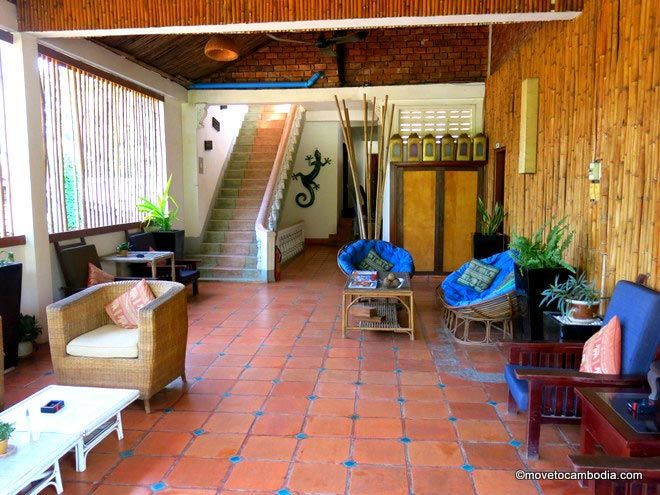
Relax after a grueling trip to the temples (and they are grueling) in one of Rosy’s common areas.
They also have a couple of nice common areas — downstairs next to the restaurant is a pool table that customers can use and upstairs there’s a breezy lounge area with comfy chairs. Were I traveling and not working, I could imagine coming here to relax after a few gruelling hours tromping around the temples. And if you are looking to visit the temples, the tuk tuk drivers outside Rosy Guesthouse are excellent; I’ve used them many times and have no complaints (which is, frankly, rare).
The restaurant at Rosy Guesthouse serves from 7AM to 11PM — they’ve a full menu of Western and Khmer dishes, but their burgers, salads and sandwiches are where they excel. I’m a fan of their juicy beef burger and their tender chicken burger, both with extra cheese and bacon, of course. Prices in the restaurant are inexplicably reasonable, a chicken ceasar salad costs $2.75. They also have a bar with Anchor on tap and a pool table. This week they are also opening a children’s playroom, making the place more of a community hub than ever.
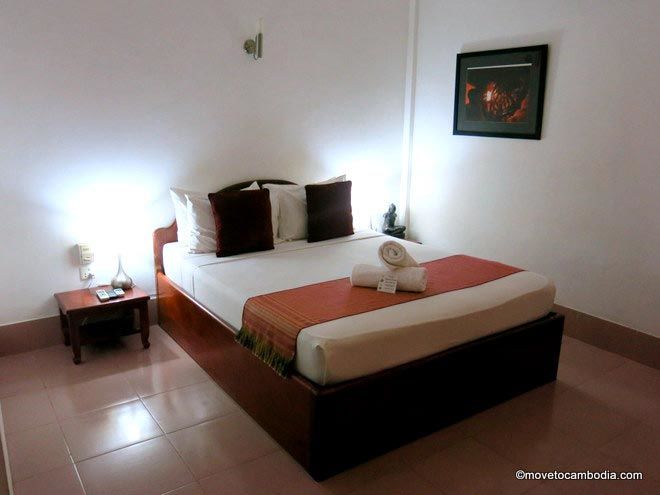
Time for a snooze at Rosy Guesthouse, Siem Reap.
I’ve no more praises left to sing about Rosy Guesthouse, but would highly recommend it as a relaxed place to stay in Siem Reap. Reservations are a good idea, especially in high season. You can make a booking at Rosy Guesthouse on Agoda.
Rosy Guesthouse
Achar Sva Street, Slor Kam Village (Along the Siem Reap River), Siem Reap
T: 063 965 059
rosyguesthouse.com
